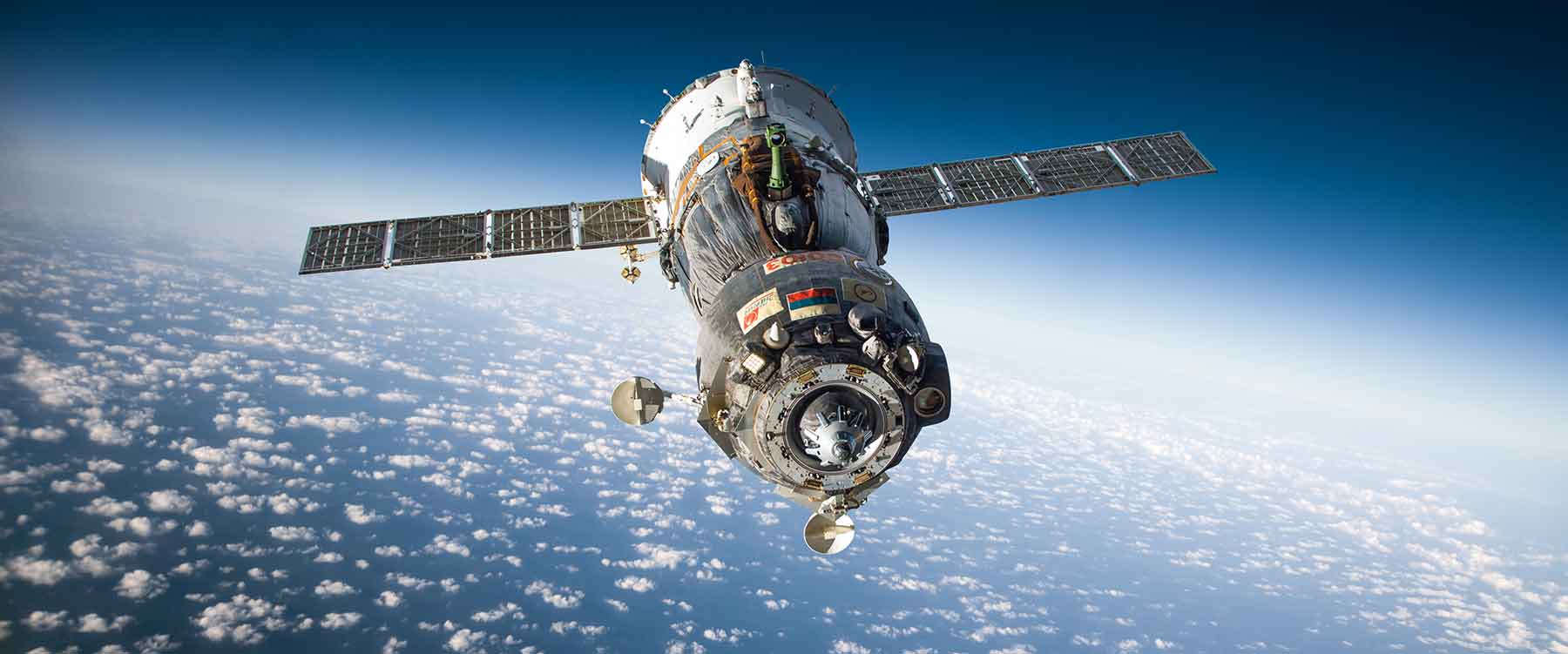Orbital Mechanics
Use this site to demonstrate or explore some basic concepts related to controlling an orbiting spacecraft.
Spaceship Controls
The spaceship can be controlled using a mouse, touch or a keyboard.
- Up Arrow - thrusts forward to speed up the spacecraft, and fires Newton's cannon.
- Down Arrow - thrusts aft to slow down the spacecraft.
- Reset / Spacebar - resets the animation.
Changing the size or orientation of your device's screen might require using the "Reset" button to reposition the spaceship correctly.
If your craft leaves the screen, it will come back. Remember Kepler's laws, though. The further away it is, the more slowly it moves.
Background Information
Maneuvering a spacecraft is mostly a matter of adjusting the shape of its orbit. Satellites move in elliptical orbits around the central body. Small adjustments in speed alter the eccentricity of the ellipse. The emphasis is always on minimizing the amount of fuel required to achieve the desired result. These pages allow you to explore applications of this knowledge.
This site focuses on changing the shape of an orbit by changing speed. There are other aspects of controlling orbits that are not dealt with here, such as changing the plane of the orbit.
Newton's Cannon Page
Why don't satellites fall out of the sky? They are falling out of the sky. They just keep missing the ground.
In a famous thought experiment, Isaac Newton explained how orbits work. He imagined firing a cannonball from a very high mountain. Gravity pulls the ball towards the centre of the earth, but the faster the ball is moving, the more gently it curves towards the ground. Fast enough and it will never hit the ground.
Simulate Newton's thought experiment here by varying the speed of the cannon ball using the slider.
Free Flight Page
Experiment to see how a brief change in speed alters the shape of the orbit.
A brief burst of speed puts your spacecraft into a more eccentric orbit that carries it further from the central body. The point where the engine was fired becomes the periapsis of the new orbit.
A brief reduction in speed puts the craft into an orbit that takes it closer to the central body. The point where the engine was fired is the apoapsis of the new orbit.
Transfer Orbits Page
Move the spacecraft from its initial orbit into either of the two alternative orbits shown. You should be able to achieve this with only two brief bursts of the engines.
This process is similar to how satellites are placed into high altitude orbits around the earth. First they are placed into a low altitude earth orbit by the launch system, then they are moved to a higher orbit by changing speed to adjust the orbit's shape, just as you are doing in this simulation. Travelling to Mars is achieved in a similar way. Initially, the spacecraft is orbiting the sun at earth's distance from the sun. A brief increase in speed puts it into a more elliptical orbit that carries it to Mars' distance from the sun.
Docking 1 Page
On the Transfer Orbits page you saw that a spacecraft can be moved from one orbit to another just by changing speed. If the intention of changing orbits is to dock with a space station, or land on Mars, or similar, then it isn't enough to just get the speeds right. You also have to get the timing right so that the space station or Mars are in the right place when you get there. Try it here!
You should able to dock with the satellite on your first try. A spaceship doesn't carry enough fuel and supplies for multiple trial-and-error attempts.
Docking 2 Page
This is similar to the Docking 1 page, except that your spacecraft starts out in the same orbit as the satellite it is trying to dock with. Since your ship starts just behind the satellite, common sense might suggest that you need to speed up to catch up with it. Firing the engines to speed up doesn't work, though, does it? Think about Kepler's Laws. You should be able to catch the satellite in minimal time with just one brief firing of the engine.
